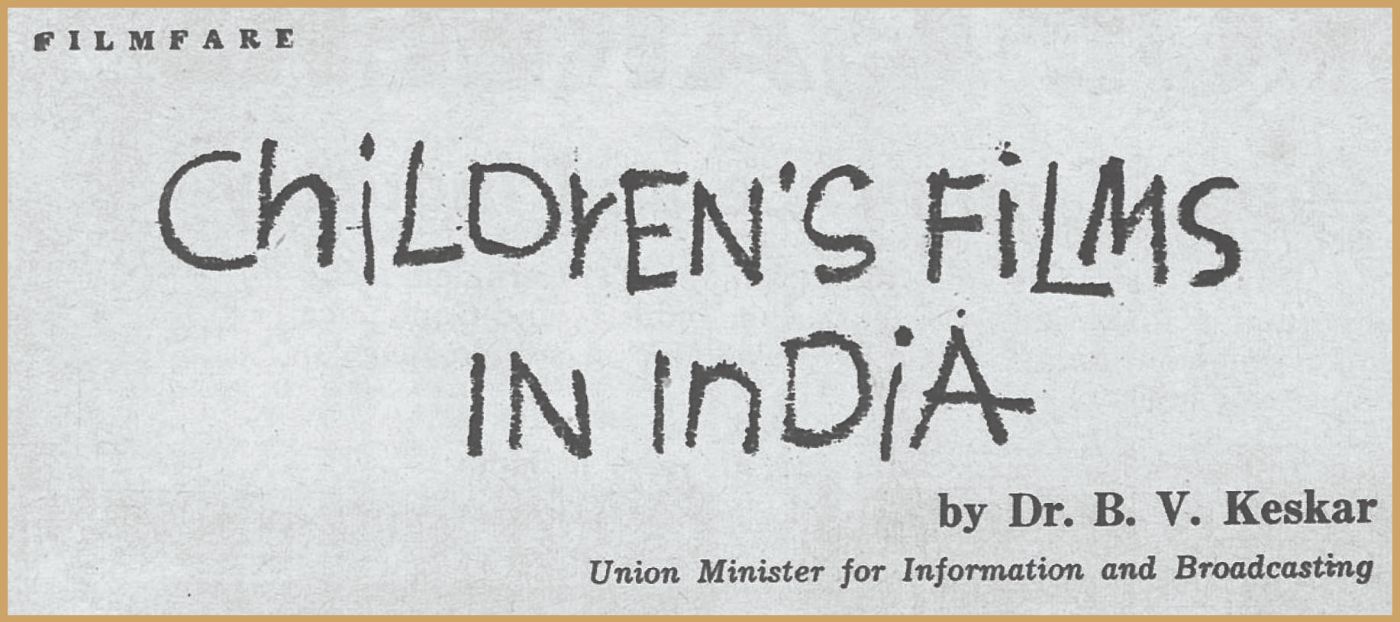
The question of producing films for children is not simply a question of film production; it is a question of education, a question of the social and moral well-being of the entire community.
No doubt, when a film is certified for public exhibition, we give it a certificate saying that it is for "universal" exhibition or restricted to "adults only". There are films which, though certified for "universal" exhibition, may have a theme or a treatment of one which is beyond the comprehension of a child.
It can quite well happen that a film may, to an adult, be a very good one, but may give a distorted picture to a child. So even supposing we have the best and noblest of films produced in the country and allow them to be shown, I do not think it will be good education and a good psychological upbringing for a child to let him see them indiscriminately.
Of course, this does not imply that every film will have a harmful effect on a child, but there is no doubt whatsoever that the child will, many times, interpret what he sees in a film in a way very different from an adult. Therefore, even under the best conditions, it is important that children have films which they can understand and appreciate.
It is always possible that, if a child continuously sees such films, then a wrong picture and background might be created in his mind, which is not good either for him or for society.
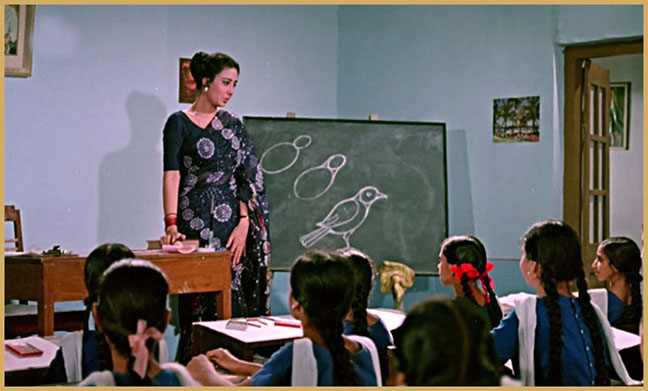
Image courtesy: https://www.youtube.com/watch?v=npuOc_tD5mI
he case for having special films for children is incontestable. Nobody can deny it, and all over the world, in different countries, children's films are produced in great numbers.
The case for having special films for children is incontestable. Nobody can deny it, and all over the world, in different countries, children's films are produced in great numbers.
I have had the pleasure of talking to many producers, and they frankly confessed that producing children's films is a risk which they are reluctant to take on a big scale. Of course, here and there, a few such films might be produced. But the fact remains, that we have taken practically no steps in this country to produce films for children.
There is no doubt that the film has become the most important medium of mass entertainment. Therefore, we must utilise this medium for giving children the right sort of entertainment, and also, through that entertainment, the right sort of psychological education.
There is no doubt that the film has become the most important medium of mass entertainment. Therefore, we must utilise this medium for giving children the right sort of entertainment, and also, through that entertainment, the right sort of psychological education.
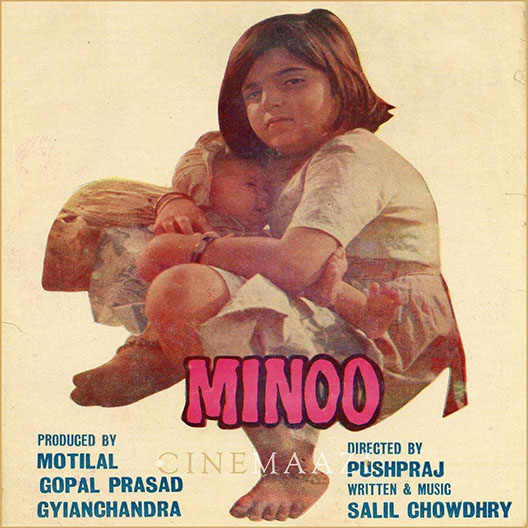
When we established the Children's Film Society, the Government did not pretend to tackle the whole question of producing children's films. It is not possible for the Society to cater at once to the demands of children all over the country. It is a very big demand. The field is vast, and the greatest difficulty is that this is a very specialised line of production.
There are two obvious categories of children's films: Films for children below, say, the age of twelve, and for children above twelve, which we can call the adolescent age, when the child begins to grasp something of the adult world.
There are two obvious categories of children's films: Films for children below, say, the age of twelve, and for children above twelve, which we can call the adolescent age, when the child begins to grasp something of the adult world.
The world of young children is different, their language is different, their symbolism is different; and unless we are able to tackle the psychology of the young child in his own way, he will not understand the film shown to him....
It is possible that an "adolescent" child might easily grasp some of the themes, or rather simplified themes, of films presented for adults. But, for young children, those things will have no meaning.
The world of young children is different, their language is different, their symbolism is different; and unless we are able to tackle the psychology of the young child in his own way, he will not understand the film shown to him and, worse still, he may interpret what is being shown so wrongly that it will ultimately affect his whole life.
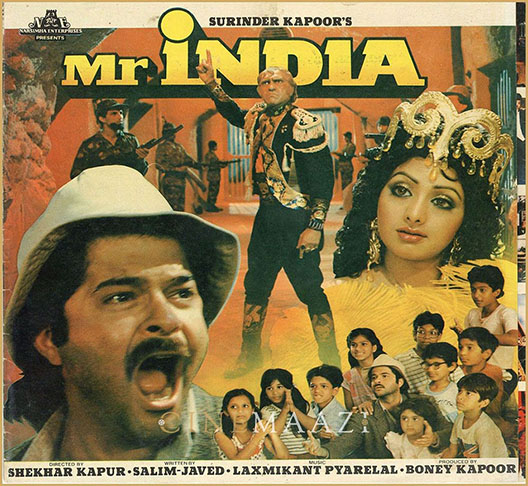
The presentation of stories and themes so that children can appreciate, understand and enjoy them is a very difficult task. It is the task of a specialist, and such specialists cannot be produced by giving somebody a diploma. They have to be trained.
We shall have to create our own experts, and they will doubtless learn a lot from foreign experts, psychologists and others. But, probably, this is not simply a job for an expert. It is a job for one who is an artist as well.
One who is merely a psychological expert will not be able to produce a film. Therefore, we have to train artists who have a flair for producing children's films, who are at one with the child's psychology, who understand what a child will appreciate and who can produce what will please and benefit him.
In the last thirty or forty years, a number of books have been produced for children. I would not say that all of them are very good for children, or that all of them are exactly the kind of books children will understand. But there is an effort here to understand the child's mind and present something for him in his own simple language.
There have been people who have had the flair for doing this. Take the example of Hans Christian Andersen, the writer of fairy-tales. Why did he become immortal? Because he produced a world of their own for children, a world which children understand and enjoy. He could sympathise with, and appreciate, the child's mind and he wrote those fairy-tales for children.
Exactly in the same way, something will have to be tried through the medium of films. We might succeed, we might not succeed, but certainly we shall have produced something for children, a part of which at least will be understood and enjoyed by them.
The Government has established the Children's Film Society, because we felt that, though we have a Films Division which produces documentaries and has the technical experts, the production of children's films is too complicated a task to be tackled by the Films Division, for it requires the help and co-operation of educationists and of society in general.
The Government has established the Children's Film Society, because we felt that, though we have a Films Division which produces documentaries and has the technical experts, the production of children's films is too complicated a task to be tackled by the Films Division, for it requires the help and co-operation of educationists and of society in general.
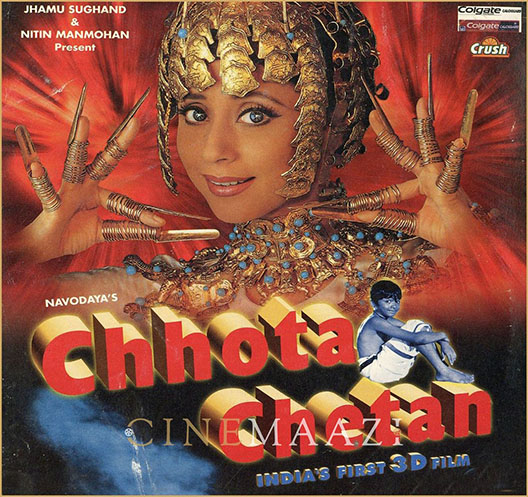
The Children's Film Society has been labouring hard to do the spade-work in this field, and its work has been difficult. When people criticise the productions of the Society, they do not realise the immensity of the problem and the tremendous difficulties which lay in the way.
It is easy to criticise the Society's work from an armchair, or for that matter anybody else's, but let it be remembered that this is a virgin field.
Nobody in the country has worked in the field systematically and the first few years of it are bound to be difficult. Only when we have built up a body of directors and competent technicians, able to write themes and preset them for children successfully, will the problems be solved effectively. That will take a little time.
The establishment of the Children's Film Society does not mean that we do not want private producers to produce films for children. The Society is a challenge to them, and we have established this Society not with the idea of creating a monopoly but in order to say to the private producer: "Look, we are trying to do this. Can you, too, do something of the same kind?"
I would certainly appeal to our big producers to do something about films meant for children. It is a contribution to the country's needs they ought to make.
I would certainly appeal to our big producers to do something about films meant for children. It is a contribution to the country's needs they ought to make. Their name and standing evoke response from the nation. They will, besides, enrich their own experience as film makers.
The Children's Film Society has had the good fortune to have Pandit Hridaynath Kunzru, a very distinguished public man of India, as its first Chairman. We had appointed Pandit Kunzru both because he takes a great interest in the welfare of children, including Scout and Girl Guide activities, and also because he was prepared to give a large part of his valuable time to this work, and he has really worked very hard to put the Society on a firm foundation.

Now we have the good fortune to have as the Society's Chairman, Shri R.R. Diwakar, who understands the problems of film production and is also enthusiastically interested in the question of producing children's films.
The Society can boast of good chairman, and it also has a dedicated Secretary, Shri Mahendra Nath, and a very good Executive Committee who work hard and with a true missionary spirit. But, then, the task is also hard and the Society, I again say, may not be able to tackle it in a way which pleases everybody.
The Society has produced a few films. I have seen them, and they really are a good beginning, for it is intended to make a variety of films. But one of the most important tasks the Society has before it is the production of children's films in all the languages needed, in order to give them greater appeal to all the children in different part of the country.
The Society has produced a few films. I have seen them, and they really are a good beginning, for it is intended to make a variety of films. But one of the most important tasks the Society has before it is the production of children's films in all the languages needed, in order to give them greater appeal to all the children in different part of the country.
There are a dozen or more languages in which these films will have to be dubbed. It is not only a difficult task but also a costly one. Much money is required for this, and it is another problem the Society has to solve.
There are a dozen or more languages in which these films will have to be dubbed. It is not only a difficult task but also a costly one. Much money is required for this, and it is another problem the Society has to solve.
The Society, I think, deserves encouragement not only from Government, which is trying to do its best to help the Society, but also from the public at large - and the country's film producers.
I am glad that "Filmfare" is helping the Society's cause.
***
This feature is an archival reproduction of an article by Dr B V Keskar (former Union Minister for Information and Broadcasting, 1952-1962) appeared in Filmfare, November 6, 1959, p. 19.
About the Author
Other Articles by Cinemaazi
17 Feb,2024
What is a Good Documentary Film?
25 Jan,2024
Salute to an Immortal Spirit
22 Jan,2024
A Painful Parting
29 Nov,2023
Children's Film Society
28 Oct,2023
Let's Give the Kids a Chance
26 Oct,2023
Directing the Child Actor
25 Oct,2023
Chandu - The Elephant Boy
23 Oct,2023
HEROISM-Children's Film Society gives the lead
18 Oct,2023
Munna
29 Sep,2023
ख्वाजा अहमद अब्बास का पत्र महात्मा गांधी के नाम
02 Sep,2023
Shakti Kapoor: It's Three Punches A Day
04 Jul,2023
Should a Filmmaker be Original?
24 Jun,2023
Babita My First Screen Love
22 Jun,2023
Phir Wohi Dil Laya Hoon
19 Jun,2023
Romance in Our Cinema
12 Jun,2023
The Romance of our Show Houses
12 Jun,2023
Kashmir Ki Kali (1964)
07 Jun,2023
Sangam (1964)
05 Jun,2023
This thing called Love
25 May,2023
Gandhi: Whose voice?
15 May,2023
"Deewar" Becomes a Nation's Prayer
15 May,2023
Mangal Pandey
06 May,2023
History of Cinema, History of the Nation
02 May,2023
Birbal Paristan Mein
20 Apr,2023
Reincarnation... the story goes on ever after
27 Mar,2023
The Film Director?
21 Mar,2023
M Sadiq
15 Mar,2023
The Social Role of the Cinema
15 Mar,2023
"Samaj" A Memorable Film with Popular Appeal
01 Mar,2023
"Two Eyes" in Hollywood
20 Feb,2023
Do Dooni Chaar
15 Feb,2023
Rafoo Chakkar
07 Feb,2023
Johnny Walker.... still going strong
20 Jan,2023
Mahabharat : Epic Tamasha
10 Jan,2023
Narsi Bhagat : An Excellent Biography
03 Jan,2023
Nav Ratri
01 Dec,2022
एक ताजगी का नाम है देवानन्द (Dev Anand)
25 Nov,2022
जे बी एच वाडिया (J B H Wadia) - वचन न जाए
01 Sep,2022
Horses .... Cars and Laughs-Mehmood
06 Aug,2022
हिन्दी फिल्मों की दुर्दशा का जिम्मेदार कौन?
01 Aug,2022
क्या हिंदी फिल्मों से हास्य गायब हो रहा है?
20 Jul,2022
हास्य की परंपरा और हास्य अभिनेताओं की भूमिका
12 Jul,2022
प्राण और उनकी दाढ़ियाँ
17 Feb,2022
Odds Against a New Comer
10 Dec,2021
Speaking of Portraits and People
03 Nov,2021
An Actor Prepares
19 Oct,2021
Producers' War on Dubbed Films
24 Aug,2021
Jottings from a Film Director's Notebook
26 Jul,2021
प्रेमचंद सत्यजीत राय और ’सद्गति’ -गिरिजाशंकर
22 Jul,2021
Rewind 1990 Commerce of Love Stories
20 Jul,2021
Eastern Scene: Cinema of Surviving Faith
22 Jun,2021
Movie Memories : Tansen (1943)
22 Jun,2021
Movie Memories: Sikandar (1941)
15 Jun,2021
Towards A Brighter Future- Bengali Cinema
20 May,2021
The Enigma Of A Flux - Malayalam Cinema
05 May,2021
The seesaw graph of Hindi filmdom
03 May,2021
Ankahee: The Unspoken
29 Apr,2021
The Mahatma Returns: World Press Reaction
29 Apr,2021
Children’s Films
17 Apr,2021
Telugu Cinema in 1986- Sons and Fathers
09 Apr,2021
Mukhamukham : Face to Face
08 Apr,2021
Tarang : Wages and Profits
01 Apr,2021
Design In Indian Cinema
27 Mar,2021
Movie Memories : Savkari Pash
23 Mar,2021
Double Trouble: Role of Twins In Hindi Cinema
22 Mar,2021
Prem Chopra: The Same Role For Ever
19 Mar,2021
Kalyan Kumar - Karnataka’s Self-Made Star
18 Mar,2021
Ceylon's Cyclonic Cinema
18 Mar,2021
Movie Memories : Aladdin & the Wonderful Lamp
17 Mar,2021
Kumari Padmini: Rising New Star Of The South
11 Mar,2021
50 YEARS OF MALAYALAM CINEMA
02 Mar,2021
Alakh Niranjan: Film India Review
27 Feb,2021
Party: The Story of Choices
26 Feb,2021
The Naushad Era In Hindi Film Music
19 Feb,2021
A Man: Amitabh Bachchan -Amitabh, is My Name
10 Feb,2021
A Man: Amitabh Bachchan - Two of a Kind
29 Jan,2021
Women In Hindi Films : Dichotomy of Values
22 Jan,2021
A Man: Amitabh Bachchan - Yesterday and Tomorrow
22 Jan,2021
Cinema in the South: Crisis of Character
18 Jan,2021
Film Societies Play Their Part
01 Jan,2021
Nutan : A Flashback - The Actress
30 Dec,2020
"Gwalan" Proves A Thrilling Entertainment !
29 Dec,2020
Rajesh Khanna : Echoes Of An Era- Family Of Four
28 Dec,2020
Holi: A Metaphor for Horizontal Violence
23 Dec,2020
A Summon for Mohan Joshi
22 Dec,2020
Nutan : A Flashback - The Friend
22 Dec,2020
Raj Kapoor Scores Personal Triumph In “Aag”!
19 Dec,2020
Smita Patil's Memoir- Trading Places
17 Dec,2020
Shashi Kapoor: Once Upon A Time- The Film Makers
16 Dec,2020
Rajesh Khanna : Echoes Of An Era- Peer Pressures
15 Dec,2020
“Lal Haveli”- Crude But Entertaining!
12 Dec,2020
Nutan : A Flashback - The Wife
10 Dec,2020
Rajesh Khanna : Echoes Of An Era
09 Dec,2020
"Lalkar" Presents Cheap Entertainment
07 Dec,2020
Smita Patil's Memoir-Comrades In Arms
01 Dec,2020
Shashi Kapoor: Once Upon A Time- Unjinxed
28 Nov,2020
Ek Din Ka Sultan- Becomes Good Entertainer !
26 Nov,2020
Smita Patil's Memoir- Friendly Strokes
25 Nov,2020
Shashi Kapoor: Once Upon A Time- Tough Times
07 Nov,2020
The Technician And His Problems
06 Nov,2020
We Must Inject Dynamism Into Publicity
05 Nov,2020
The Role Of Film Finance Corporation
04 Nov,2020
Progress In Raw Film
30 Oct,2020
Freedom In Films
28 Oct,2020
Export Market For Indian Films
23 Oct,2020
The Growth of The Motion Picture
22 Oct,2020
Setup Of The Film Industry
21 Oct,2020
Few Facts About Film Production
13 Oct,2020
Personalisation In Cinema
08 Oct,2020
Waiting for a Doyen's Glance- Arati Bhattacharya
08 Oct,2020
कौन सुनेगा इन सिसकती बिलखती प्रतिभाओं का विलाप?
06 Oct,2020
Asrani - Laugh And The World Laughs With You
05 Oct,2020
My Memorable Roles- Hiralal
03 Oct,2020
राजीव गोस्वामी - कहां थे अब तक 'पेंटर बाबू'?
03 Oct,2020
जब नफरत से बेड़ा पार हो गया: बलराज साहनी
30 Sep,2020
The Case of Emotional Turmoil In Dopatta (1952)
29 Sep,2020
The Story Of A Child Artiste - Sheela Kashimiri
26 Sep,2020
Afsana Likh Rahi Hoon : Tun Tun
26 Sep,2020
Some Hopes For The New Year: Lillian
24 Sep,2020
Joru Ka Bhai: A Tale of 'Atithi Tum Kab Jaoge'
22 Sep,2020
अभिनेता प्रेमअदीब से भेंट
21 Sep,2020
Vijaylaxmi: A Career As The 'Other' Woman
18 Sep,2020
Shaminder: The Actor Who Had High Hopes
16 Sep,2020
धर्मेन्द्र - समय आ रहा है...
14 Sep,2020
Film Life After Fifty : Motilal
14 Sep,2020
प्रसिद्ध फिल्म लेखक गुलशन नंदा से आपकी बातचीत
11 Sep,2020
"I live on hope"- Kumkum
11 Sep,2020
Thehr Zara O Jane Wale : Madhubala Jhaveri
09 Sep,2020
Ratnamala Attracts Attention In ‘Station Master’
08 Sep,2020
Ghory: The Laurel Of Indian Cinema's Comedy Duo
07 Sep,2020
Yeh Teri Saadgi, Yeh Tera Baankpan: Usha Khanna
07 Sep,2020
सेनापति शेट्टी
05 Sep,2020
कृतिदेव यहां मैं, तनूजा, स्वीकार करती हूँ
05 Sep,2020
मै उर्मिला को भूल नहीं पाती - मंजरी
04 Sep,2020
बुलबुल बंगाल की: चंद्राणी मुखर्जी
03 Sep,2020
Payyal's Lucky Break
02 Sep,2020
These Foreign Producers
29 Aug,2020
The Practical Actress: Shabnam
29 Aug,2020
“Amrit” Becomes A First Class Picture
28 Aug,2020
फिल्मी मारपीट के गुरू : अजीम भाई
26 Aug,2020
From Poverty to Screen Fame - Mehboob Khan
26 Aug,2020
Humility: Nasreen's Most Admirable Feature
24 Aug,2020
A Mercenary Comes To India - Bob Christo
23 Aug,2020
Dilip Kumar: The Leader
19 Aug,2020
Alam Ara: Ardeshir Irani's Ambitious Secret
17 Aug,2020
I Serve My Art- Kanan Devi
10 Jul,2020



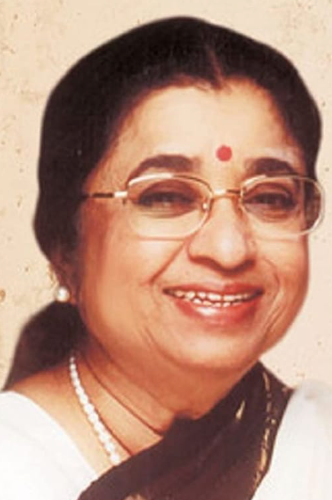


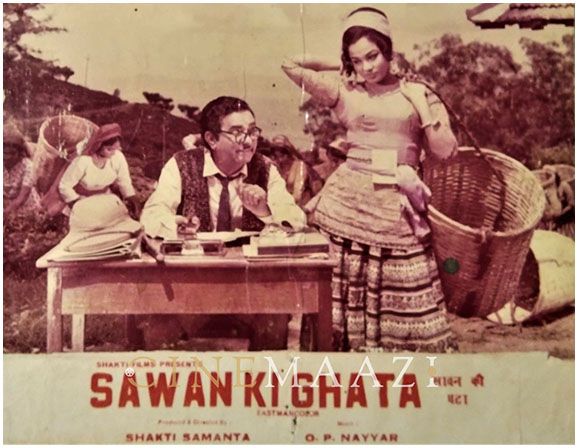
.jpg)


